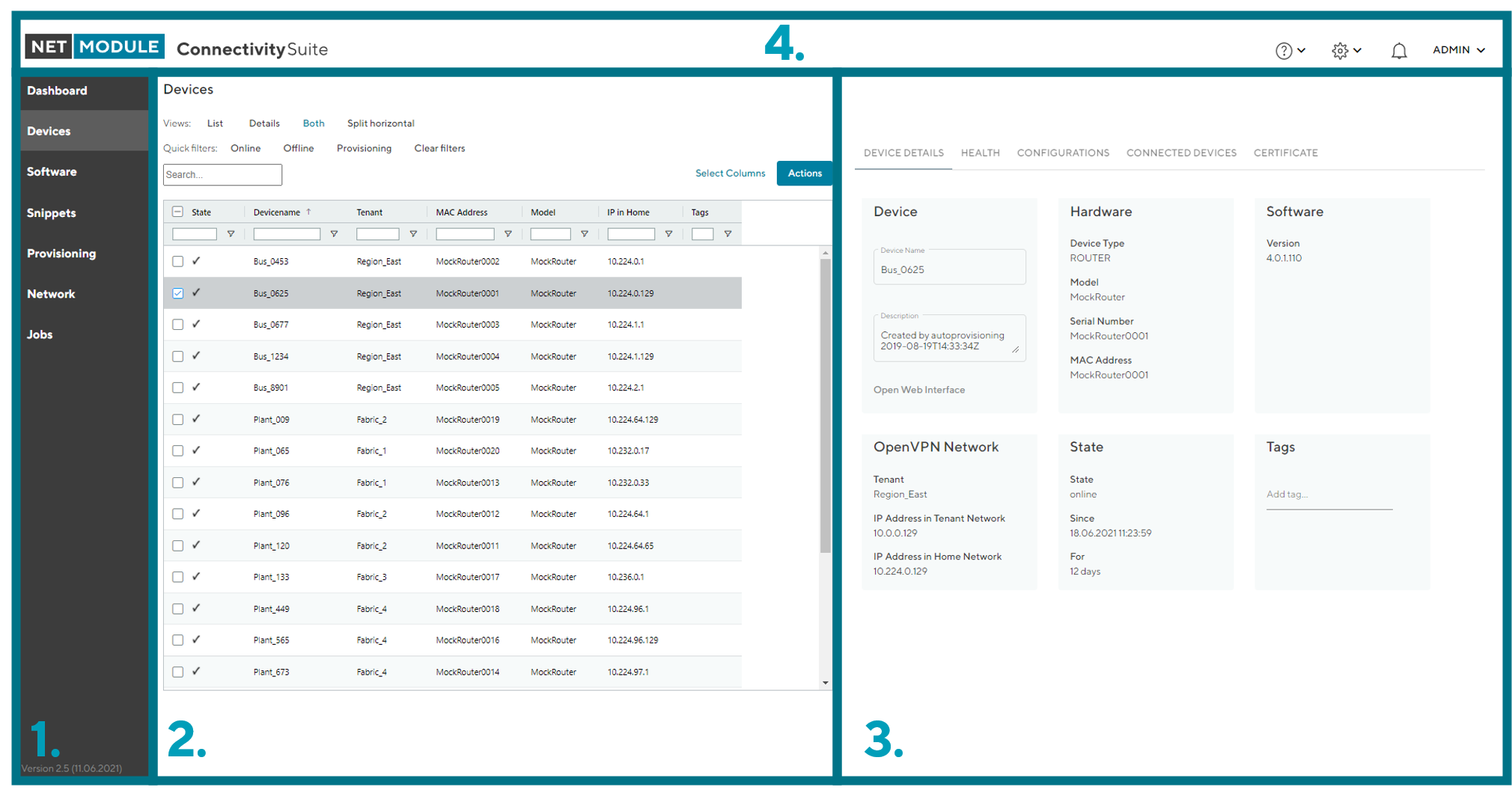2. Introduction¶
2.1. Key Features¶
Remote access with one click: Access all connected routers and clients of your routers within seconds via the web interface of the Connectivity Suite.
Configure & Control: Remote execute automated and scheduled remote over-the-air updates and configurations.
Communication via REST API: REST API to access functionalities from the Connectivity Suite via your own platform or application.
Scalable network: Adding new assets to your existing network can be done within a few minutes and without network configuration know-how required.
Organize & Control Access: Grouping assets based on a multitenancy capability with hierarchical access control to group your assets according to customers, regions, teams etc.
End-to-end Security: Auto-setup of encrypted VPN infrastructure for an end-to-end encryption to secure your communication and your network without any user intervention required.
Cloud based or On-Premise installation: Installation and operation is possible in a cloud environment but also on-premise on your in-house servers to keep control of your data.
2.2. System Architecture¶

Fig. 2.1 System architecture¶
System Architecture
The Connectivity Suite provides several interfaces to communicate and a highly scalable architecture to add networks and devices operating it on-premise or in the cloud. The connectivity suite allows to support up to 150 Tenant Networks each running on a virtual VPN server. To communicate the connectivity suite provides several interfaces:
Machine to machine-based interface (M2M) based on a REST API
Human to machine interface (HMI) based web interface using different user roles to restrict access on different levels
VPN access from as example a back office / operation and Control Centre to the Devices and End Devices via VPN servers in the connectivity suite to run customer applications
The Connectivity Suite runs on a Linux server. For every Tenant Network a virtual server will be setup which acts as VPN server using OpenVPN. Connection to the different devices on each Tenant Network can be established via VPN or private APN. However when using a private APN the VPN will exist within the private APN. The VPN tunnels are required so that the Connectivity Suite can establish a connection to the devices and tenants at all. This means that double encryption is used in the private APN. Once for the APN and once for the VPN tunnel.
2.3. Web interface connectivity suite¶
The web interface of the connectivity suite provides the interface to configure and setup the connectivity suite incl. the connected devices via a HMI. Find below a description and general overview of the web interface.

Fig. 2.2 UI overview¶
|
|
|
|
In this bar the navigation between
the main features is possible:
|
Provides a table of the different
devices, networks, configurations
or software versions depending on
the page chosen in the Navigation bar.
|
Provides detailed or requires
information about the selection
of the Main dialogue box.
|
Provides general support or help
incl. user management.
|